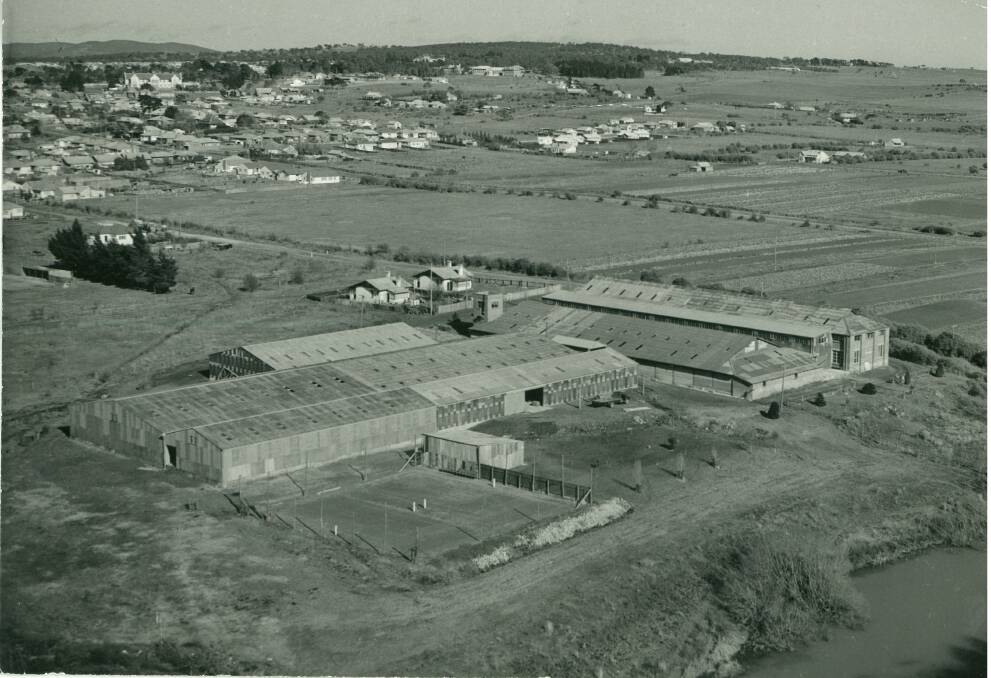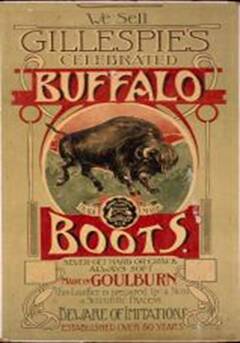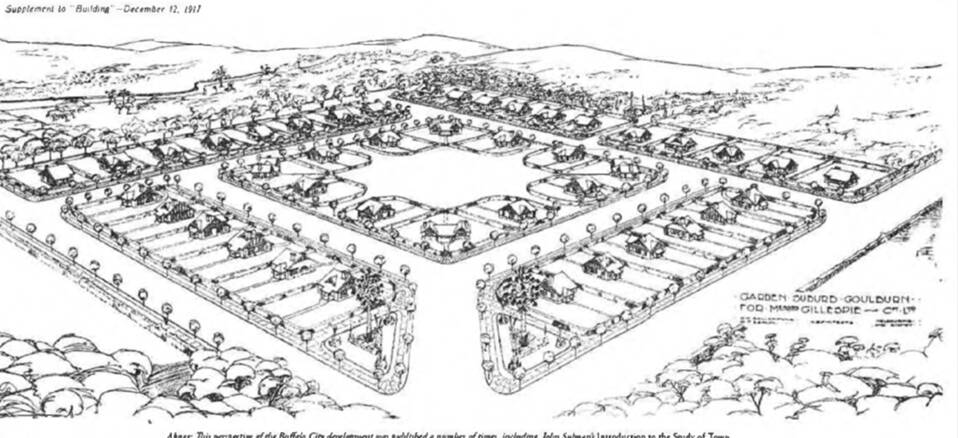Tanneries were a pioneer industry in New South Wales, with the first tannery being established by James Wilson between Pitt and George Streets in Sydney in 1814.
Subscribe now for unlimited access.
$0/
(min cost $0)
or signup to continue reading
Tannery businesses were operating in the Campbelltown and Liverpool districts from the 1830s. They flourished there from 1840, but in 1860 a law was passed forcing these heavily polluting activities out of the city.
Tanneries which required large and regular supplies of water close to the tanning yards, wattlebark for the tanning process and plenty of cheap land that did not impinge on residential areas soon developed in regional areas in NSW.
READ MORE:
Tanning, the process of converting animal skins to leather, boomed quickly in the colony as leather was scarce.

Tanning and boot making businesses were one of Goulburns most important secondary industries for over 100 years.
In 1844 Dennis Gillespie started the first factory, on the corner of Auburn and Goldsmith Streets.
A second factory was built in 1878, by Charles Gillespie, employing 135 workers, plus 40 at its tannery.
Gillespies made 500 pairs of blucher boots for the New South Wales contingent to the War in Sudan in 1885. Gillespies was sold in 1907, but the name was retained for a new venture.
In 1915, Gillespie and Co formed a new company, with a new factory being constructed on the corner of Auburn and Bradley Streets and a tannery on the banks of the Wollondilly River operated in conjunction with the boot factory (where Gibson St is now).
Interestingly, the new tannery on the Wollondilly operated in conjunction with the development of the model village, Buffalo City.
In Australia by 1910, an organised planning movement had developed whose concerns included the development of garden towns and planned suburbs.
A variation on this was the development of the company suburb, where housing was tied to a particular employer.
The proposed development of Buffalo City in Goulburn was one such suburb.
Gillespie and Co commissioned Melbourne architect CH Ballantyne and Sydneys Donald Esplin (1874-1960) to draw up plans for their new large tannery complex on the Wollondilly River, as well as employee housing, to house the workers at their tannery site in 1917.
The new tannery building opened in February 1918, with the Goulburn Evening Penny Post (February 16, 1918, p2) noting that the tannery was one of the most up-to-date in the Commonwealththousands of pounds had been invested, and the latest labour saving machinery installed.
Gillespies new factory, on the corner of Auburn and Bradley Streets, opened in March 1916.
On the Bradley Street wall side of the factory was a twice life-size buffalo painted there. The image of the buffalo was reputed to frighten horses when they drove past as they turned the corner.

Despite the new factory opening, Gillespies business was hindered by a severe housing shortage, as a result of the First World War.
A survey in Goulburn revealed that houses were required to accommodate new workers and their families.
As a result, Gillespie and Co acquired land adjacent to the tannery on the Wollondilly River and commissioned a comprehensive plan for erecting all the requisite dwellings in such a manner that every modern convenience could be provided and the health and happiness of the workers thoroughly safeguarded.
Trees were to be planted in the streets of Buffalo City and hedges substituted for fences around the houses, which were on large allotments.
In 1918 it was reported that the first garden village in connection with Australian industry is now being established at Goulburn by Messrs. Gillespie and Co, of that city.
The area has been neatly laid out and prettily designed bungalows are being built thereon the Garden Village at Goulburn is developing rapidly (Canowindra Star and Eugowra News, Friday, March 1, 1918, p2 Goulburn Garden City).

During the First World War, Gillespies produced leather to manufacture 50,000 pairs of boots for the Australian military forces.
In 1921 it was reported that Buffalo City is a busy little suburb of Goulburn. At the tannery a large number of hands are employed in treating raw hides for use in Gillespies boot factory. Enormous quantities of wattle bark are used in the process of tanning and thus is created an industry from which a number of men derive a comfortable livelihood. (Goulburn Evening Penny Post, Thursday, December 1, 1921, p4).
Despite the grand and philanthropic vision of Mr Gillespie, due to financial difficulties post the First World War, the company was forced to close.
Only 12 of the proposed 43 homes in Buffalo City were built, before the company became unprofitable and went into liquidation in 1926.
The tannery buildings, in a poor state of repair, were purchased in 1940 by Ray Bladwell & Co, woolbrokers, who repaired and remodelled the buildings for use as wool stores (See Goulburn Evening Post, Friday, October 11, 1940, p5, Old Tannery).
The tannery buildings were demolished in the 1990s.
Our journalists work hard to provide local, up-to-date news to the community. This is how you can access our trusted content:
- Bookmark our website
- Follow us on Twitter
- Follow us on Google News
- Make sure you are signed up for our breaking news and regular newsletters

